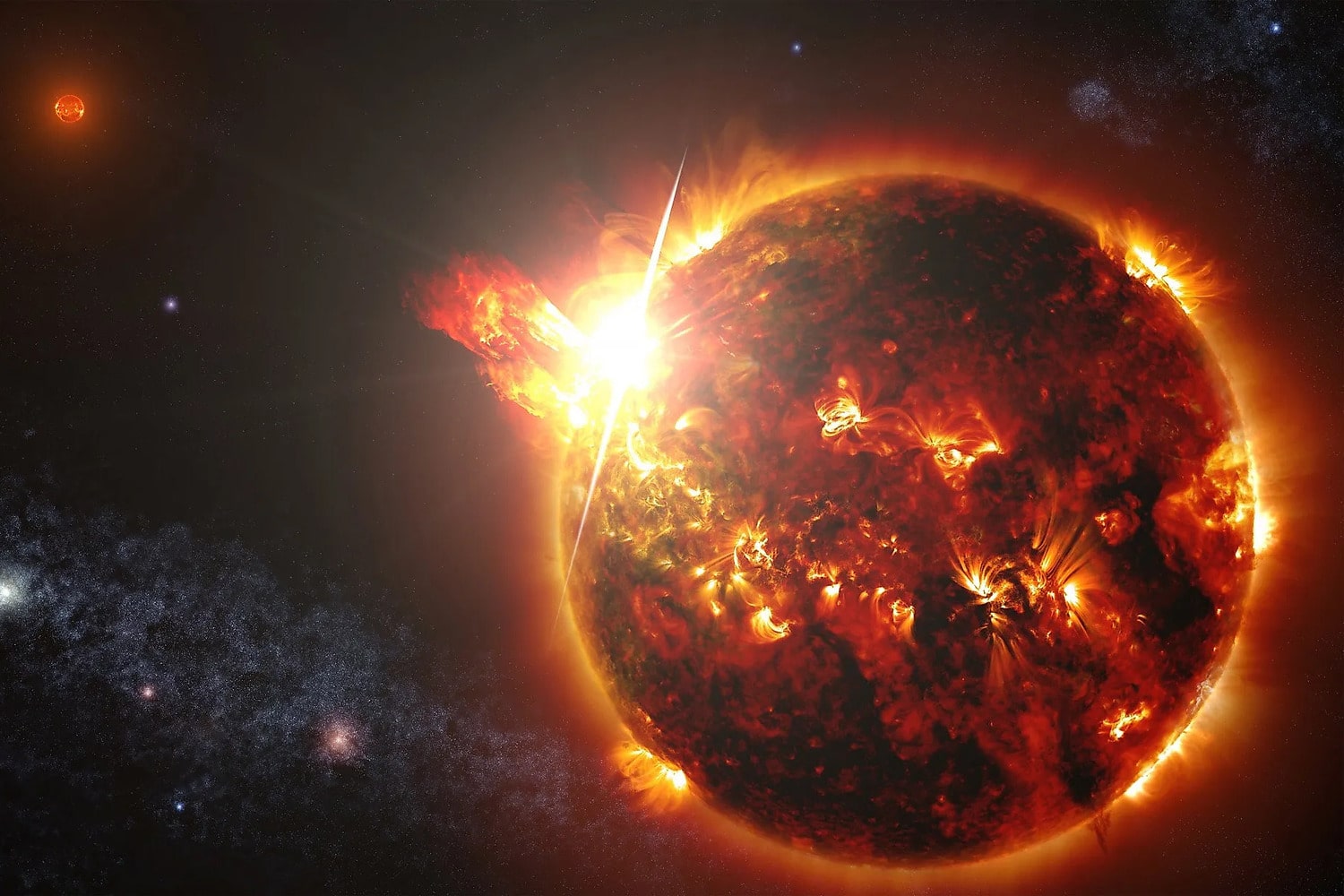Red giants are among the most fascinating celestial objects in the universe. Their enormous size, brightness, and long evolutionary journey have intrigued scientists and stargazers for centuries. These stars are born from ordinary stars like our Sun but undergo dramatic transformations toward the end of their lives. Their glowing red-orange light gives the cosmos an extraordinary beauty and a sense of grandeur. Here are captivating and educational facts about red giants that you may not know.
- Red giants form during the late stages of a medium-mass star’s life. When hydrogen in the core runs out, nuclear fusion slows down, and the core begins to contract. At the same time, the outer layers expand, transforming the star into a huge sphere that emits a warm reddish light.
- The size of red giants can be hundreds or even thousands of times greater than that of the Sun. For example, the famous star Betelgeuse has a diameter about 700 times larger than the Sun. If it were located at the center of our Solar System, its surface would reach the orbit of Jupiter.
- Despite their immense size, red giants have extremely low density. The material in their outer layers is so thin that it resembles a near vacuum. This makes them appear gigantic while remaining structurally light and delicate.
- The surface temperature of red giants is much lower than that of ordinary stars. It typically ranges from 3000 to 5000 degrees Celsius, while the Sun’s surface temperature is about 6000 degrees. This lower temperature gives them their characteristic reddish hue.
- Even though their temperature is relatively low, red giants emit vast amounts of energy due to their enormous size. Their luminosity can exceed that of the Sun by thousands of times. They are among the brightest objects in the night sky, often visible without a telescope.
- Red giants play a crucial role in the cosmic cycle of matter. During their evolution, they expel elements created through nuclear fusion into surrounding space. These elements enrich interstellar dust, which later becomes the building material for new stars and planets.
- At the final stage of their lives, red giants shed their outer layers, forming planetary nebulae. The remaining core turns into a white dwarf — a highly dense star roughly the size of Earth. This marks the natural end of evolution for medium-sized stars.
- Our Sun will also become a red giant in the future. In about 5 billion years, it will expand so much that it will engulf Mercury and possibly Venus. By that time, Earth will either be destroyed or transformed into a scorched, lifeless world.
- The most famous example of a red giant is Betelgeuse in the constellation Orion. It is one of the brightest stars in the night sky, easily visible to the naked eye. In the future, it will explode as a supernova, ending its life in a spectacular burst of energy.
- Many red giants are variable stars, meaning their brightness changes over time. This happens because their outer layers expand and contract in rhythmic cycles. The variations can be so dramatic that the star’s brightness changes several times within one cycle.
- Among red giants, there is a special category known as red supergiants. These are much more massive than typical red giants and can be millions of times larger than the Sun. Examples include Antares and VV Cephei.
- The atmosphere of some red giants has a complex structure with powerful convection currents. These currents create enormous hot regions on the surface that alter the star’s appearance. Such phenomena have been observed on Betelgeuse, where massive “hot spots” of plasma have been detected.
- The life cycle of a red giant depends on its initial mass. The more massive the star, the faster it goes through its stages of evolution. The most massive stars end their lives in supernova explosions, while smaller ones evolve into white dwarfs.
- During their existence, red giants lose a significant portion of their mass. Strong stellar winds blow material into space, forming dusty envelopes around the star. These ejected materials often appear as colorful nebulae.
- The brightness of red giants is not always stable. Astronomers observe sudden flares and drops in luminosity caused by changes in the star’s internal structure. Studying these fluctuations helps scientists better understand the physical processes occurring within stars.
- Some red giants form binary systems with nearby stars. If the companion is close enough, the red giant can transfer part of its matter to it. Such systems often become sources of powerful X-ray radiation.
- Red giants can exist for millions of years, though this is relatively short compared to earlier stages of stellar life. During this time, they enrich the cosmos with heavy elements. Thanks to them, the universe contains the materials necessary for the formation of planets and life.
- Astronomers use red giants as cosmic “beacons” for measuring distances in space. Their predictable brightness allows scientists to determine the scale of galaxies and star clusters. This provides valuable insights into the structure and evolution of the universe.
- Red giants are popular targets for amateur astronomers. Because of their brightness and size, they can be seen even through small telescopes. Observing them offers a vivid reminder of the vastness and majesty of the cosmos.
- Many red giants are found in globular clusters — ancient systems containing hundreds of thousands of stars. Their presence helps determine the age of these clusters and understand the development of galaxies. They serve as living witnesses to the history of the universe.
Red giants are a magnificent reminder that even stars are not eternal, yet their existence profoundly shapes the cosmos. They create new elements, form nebulae, and pave the way for the birth of new stars. These incredible facts reveal the beauty and power of stellar evolution. Each red giant is a glowing trace of the past and a foundation for the future.





